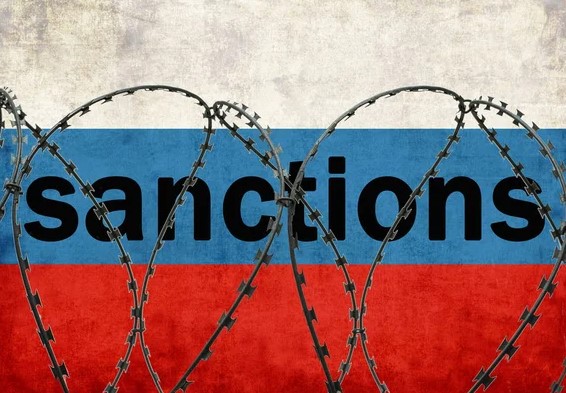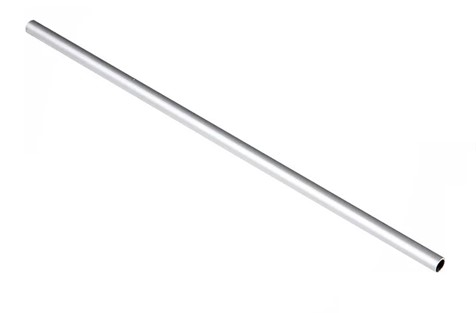Dollar and euro settlements for Russian exports have fallen to a record low.

For the first time, dollars and euros accounted for the smallest share of the currency structure used in settlements for Russian exports in 2024 , year-on-year. This is evidenced by Bank of RUSSIA statistics reviewed by RBC (available since 2019).
The share of dollars and euros amounted to 18.6%, a 13 percentage point decrease from 31.6% over the year. This occurred against the backdrop of an increase in the share of friendly currencies to 40.2% from 29.4% the year before. For the second year in a row, the ruble holds the largest share in export settlements—41.3% in 2024, but this is only 2.3 percentage points higher than the 2023 figure.
In import payments, dollars and euros also occupied the smallest share for the first time at the end of the year.
The Central Bank publishes data on the structure of currencies in foreign trade contracts used for settlements for exports and imports, by geographic direction: Asia, America, Africa, Europe, the CaribbeanBasin and Oceania. The statistics show the share of the ruble, currencies of unfriendly countries (primarily the dollar and euro), and other currencies, which include currencies of friendly countries—yuan, rupees, dirhams, etc.
How countries pay for exports- The share of the dollar and euro in export payments has been declining since 2022, following the imposition of large-scale sanctions by Western countries against Russia due to the start of the special military operation in Ukraine . For comparison, in 2021, before the sanctions were imposed, it was 84.6%, and by the end of 2022, it had fallen to 63.6%. The 2024 figure was impacted by the reduced use of dollars and euros by Asian and European countries.
- Asian countries, Russia's largest trading partners, primarily used friendly currencies in 2024—46.6%, up 10.9% year-on-year. The ruble's share also increased slightly in this area, by 1.2 percentage points to 37.4%. The share of dollars and euros fell by 12.1 percentage points to 16%.
- Europe primarily used the ruble to pay for exports , accounting for 60.3%, up 11 percentage points year-on-year. The share of currencies from friendly countries increased by 2.7 percentage points to 10.2%. The share of dollars and euros decreased by 13.7 percentage points to 29.5%.
- Dollars and euros remain the primary currencies for transactions with America—the 2024 figure stood at 67.5%, but this has decreased by 7.3 percentage points over the year. The ruble's share, on the other hand, has increased to 30.1%.
- The ruble was also the predominant currency used for export payments to African countries, reaching 48.8% (up 11 percentage points year-on-year). Dollars, euros, and other currencies each accounted for approximately 25%.
- In import payments, the ruble accounted for 43.2% of the overall currency structure, a 13.2 percentage point increase over the year. The share of neutral currencies decreased slightly by 1.3 percentage points to 34.7%; the share of the dollar and euro fell by 12 percentage points to 22%.
- Asian countries also primarily used friendly currencies for import payments, accounting for 47.2%, but this share fell by 3.6 percentage points over the year. The ruble's share in Asian payments, on the other hand, increased by 16.4 percentage points to 39.2%. Dollars and euros accounted for only 13.6% of the total, down 12.8 percentage points from the 2023 figure.
- The share of the ruble in payments for imports from European countries increased by 7.3 percentage points over the year, to 54.5%; the share of dollars and euros fell by 7.2 percentage points, to 41.8%. The share of neutral currencies remained unchanged at 3.7%.
The decline in the use of the dollar and euro in foreign trade is occurring "against the backdrop of unprecedented sanctions from the US and EU," the Bank of Russia explained at the end of 2022. For example, settlements in dollars and euros have become significantly more difficult, as a significant number of Russian banks are subject to blocking sanctions, several more banks have been disconnected from the SWIFT financial messaging system, and correspondent accounts for banks not subject to sanctions are being closed.
The changes are also driven by increased trade with Asian and African countries using national currencies and the currencies of neutral countries, a Ministry of Economic Development representative told RBK. Also, since April 2022, gas payments with EU countries have been denominated in rubles. According to the latest data from the Federal Customs Service, in the first nine months of 2024, exports to Asia amounted to $268.1 billion, to Europe $55.6 billion, with another $20.5 billion coming from Africa and $10 billion from the Americas. The situation is similar with imports: Asia is the largest trading partner ($153.8 billion), with $60.7 billion worth of goods imported from Europe, $12 billion worth of imports from the Americas, and only $2.8 billion from Africa.
Read together with it:
- Парагвай: Экспорт субпродуктов является растущей отраслью и уже достиг 95,4 млн долларов СШАЭкспорт говяжьих субпродуктов в этом году значительно вырос. К концу августа выручка составила 95,4 млн долларов США по сравнению с 54,6 млн долларов США на тот же конец прошлого года. По данным SENACSA, в конце августа этого года было экспортировано 51 миллион килограммов мяса по сравнению с 33,7 миллиона килограммов на конец того же месяца прошлого года. Экспорт субпродуктов увеличился на 51,3%....
- Новые горизонты сотрудничества: Россия и Аргентина обсуждают совместный доступ на рынки продукции животного происхожденияОдной из ключевых тем конференции стал контроль за производством ветеринарных препаратов в Аргентине. Аргентинская сторона представила свою систему контроля, включающую Управление ветеринарных продуктов и Управление лабораторий животных. Эти организации обеспечивают высокие стандарты безопасности, так как каждая производственная единица подвергается проверкам каждые 3-5 лет и зарегистрирована в ин...
- Министерство сельского хозяйства США представило план по снижению цен на говядинуПоголовье скота в стране находится на самом низком уровне за последние 75 лет, в то время как спрос на говядину вырос на 9% за последнее десятилетие. Поскольку увеличение поголовья скота в стране требует времени, Министерство сельского хозяйства США (USDA) уже сейчас инвестирует средства, чтобы сделать эти рынки менее волатильными для скотоводов в долгосрочной перспективе и более доступными для по...
- С января по июль экспорт свинины из ЕС вырос на 1,6%На втором месте оказались Нидерланды с объёмом экспорта в 392 000 тонн. Дания экспортировала свинину в третьи страны с объёмом в 308 000 тонн, что примерно на 13% меньше, чем в предыдущем году. Германия экспортировала 180 000 тонн, что на 18% меньше, чем годом ранее. Это было обусловлено, главным образом, дополнительными ограничениями на экспорт, вызванными вспышкой ящура в начале года. Помимо зап...
- Московская область планирует нарастить мясное производство на 25% к 2030 годуВ Московской области более 100 предприятий уже выпускают около 305,000 тонн мяса, из которых значительная доля поступает от 19 ведущих производителей свинины и мяса птицы. Также в регионе реализуются два новых инвестиционных проекта: в Можайске строится утиная ферма на 125,000 птиц, а в Ступино — овцеводческое хозяйство на 11......





























































